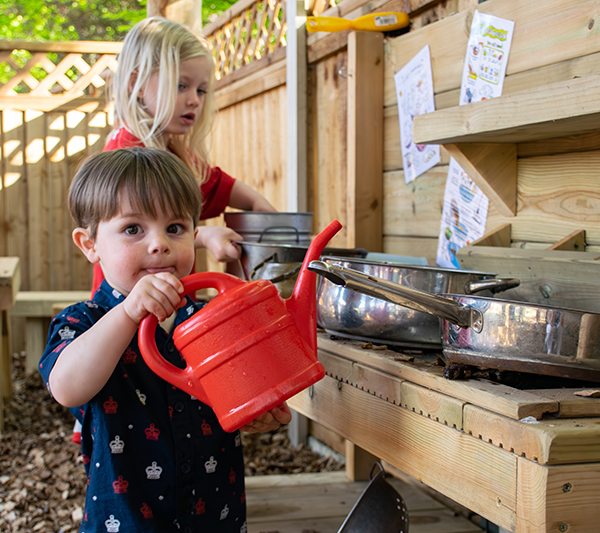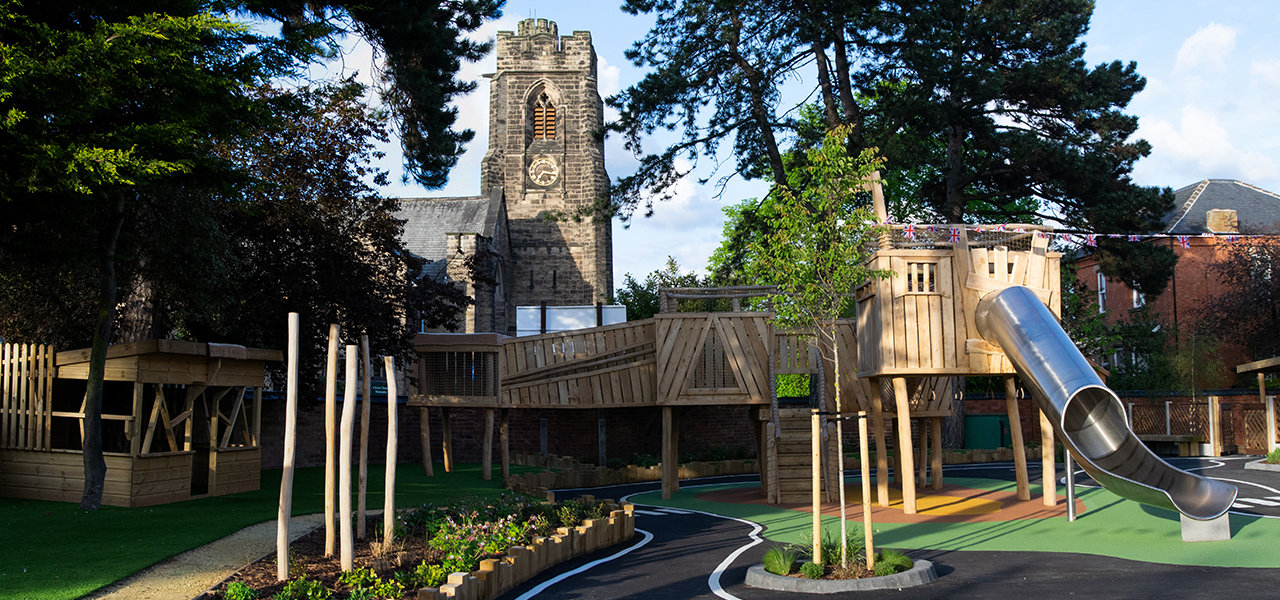Ares Landscape Architects were approached by Trent College and The Elms to help develop their external learning environments, across the whole school campus. The aim was to transform a series of tired, unimaginative play spaces into a valuable resource for the school and pupils.
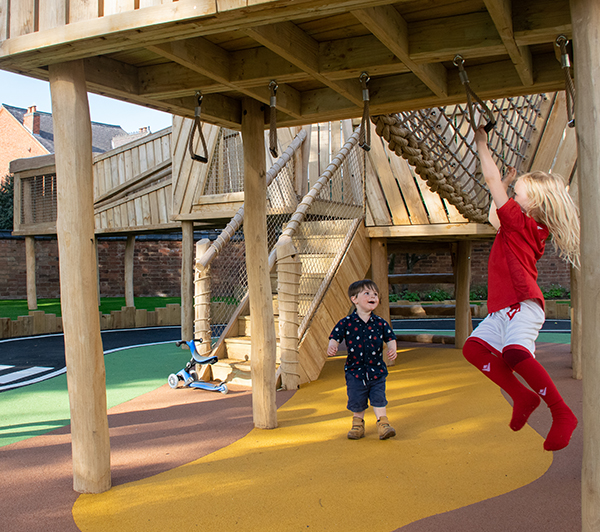
The Problem: Limited Play and Learning Opportunities…
Badly designed and outdated play spaces were affecting uptake to the school and limiting the transformative pupil development that can come from outdoor play. A new eye-catching external environment with a strong pedagogical design was therefore top of the school’s agenda.
The existing site had a piecemeal approach to play opportunities and no coherent overall design. Progression of play, appropriate to different age groups, was missing, for example more adventurous activities for older children. Spaces were poorly defined, limiting the ability for pupils to achieve the widest scope of play. Whilst freedom and undirected learning are a large part of what makes play so important, children need the variety of spaces to support this type of creativity.
A child having time outside each day has been proven to benefit mental health and emotional well-being. However, the existing site was dominated by the hard landscape and grey asphalt. There were limited habitat or green spaces meaning much of the outdoor play-scape felt like a mirror of the indoors rather than championing the qualities offered by nature.
The school also wanted their external spaces to reflect the quality of their teaching and be a tool for learning and delivering the curriculum. Their original playground was missing some of the key resources necessary to support this goal.
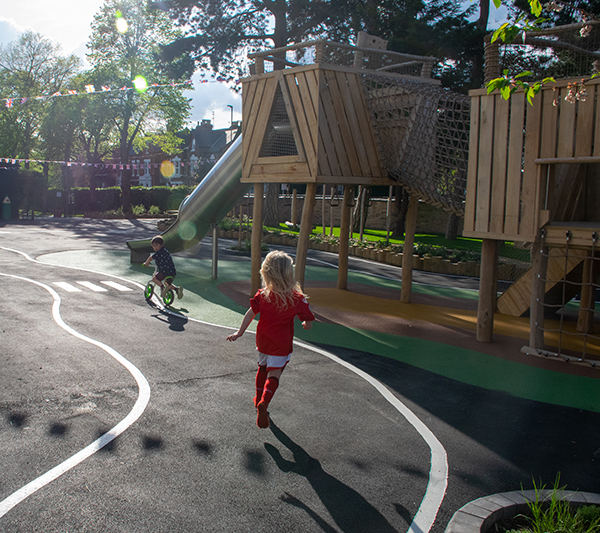
The Solution: An Educational Ecosystem
An educational ecosystem can be described as a community network with five strands: framework, connections, culture, pedagogy and spaces. Only when all these strands interlink do you create a complete living picture of the environment, allowing users to zoom in and out according to their needs.
Our inspiration for the design of this play ecosystem came from exploring the relationship of human beings and outdoor spaces, based on woodland typologies.
Forests and woodlands are multi-functional ecosystems. They provide food and fuel, clean the air, filter water supplies, control floods and erosion, sustain biodiversity and provide opportunities for recreation, education, and cultural enrichment. They provide open ended interactions between people and place.
We identified how the different types of space within a woodland, such as the glades, edges and the woodland itself could form varying play and social interactions:
- Glades: Open / Active / Energetic Movement
- Edges: Semi-open / Social / Dynamic Interactions
- Woodland: Enclosed / Passive / Sensory Focused Learning
Using this strategy, a design was developed which looked to create an order of play spaces based on the above typologies. When we combined the concept of a forest with the education ecosystem, we looked to create an interlinked open-ended experience between people and place. The aim being to provide the school with a series of multi-layered outdoor spaces, to make a new play ecosystem.

The Design and Build Process: Collaborating with the Staff and Students
Ares Landscape Architects worked closely with the school, including both the students and teachers, to ensure that they had a real say in the way we built their dream space. From the teachers this included creating spaces that supported pupils to be independent in their play and have autonomy over their external landscape. From the pupils the dream was a fun, exciting playground with the chance for a wide range of activities to coexist. Using the woodland matrix as an overall strategy we were then guided by a holistic “Everything is Play” approach. This ensured that every single detail of the play experience had a purpose.
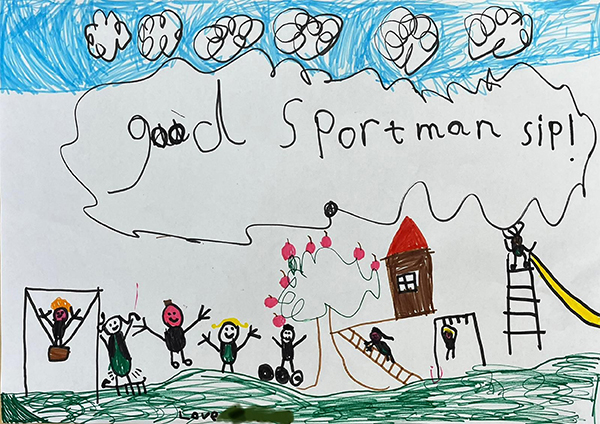
During the design process, collaboration played an important part in developing each element to maximise play value. The teachers, the landscape architects, the contractor (Tanbry Construction), project manager (MPP Group) and the play equipment designer (Natural Expressions), each a specialist in their own field, collaborated to make a truly bespoke space. The result was a playground unique to its setting and has a soul all of its own, none of which would be possible with the typical rigidity seen in some projects of this type.
Focusing on creating a play ecosystem, inspired by woodland typologies, moved everyone from a rigid focus on individual play items to a holistic design where pupils can develop through their playground both in terms of individual needs on a day-to-day basis and their overall learning journey.
A hands-on approach to learning took place between the school and the site workers during construction which included activities such as a shared assembly, regular site visits from the children and creative classroom activities. All these personal touches made this project a beautiful and educational experience for everyone involved.
The result was a learning landscape rich in colour, greenery and interaction which is already loved and heavily used by the pupils.
